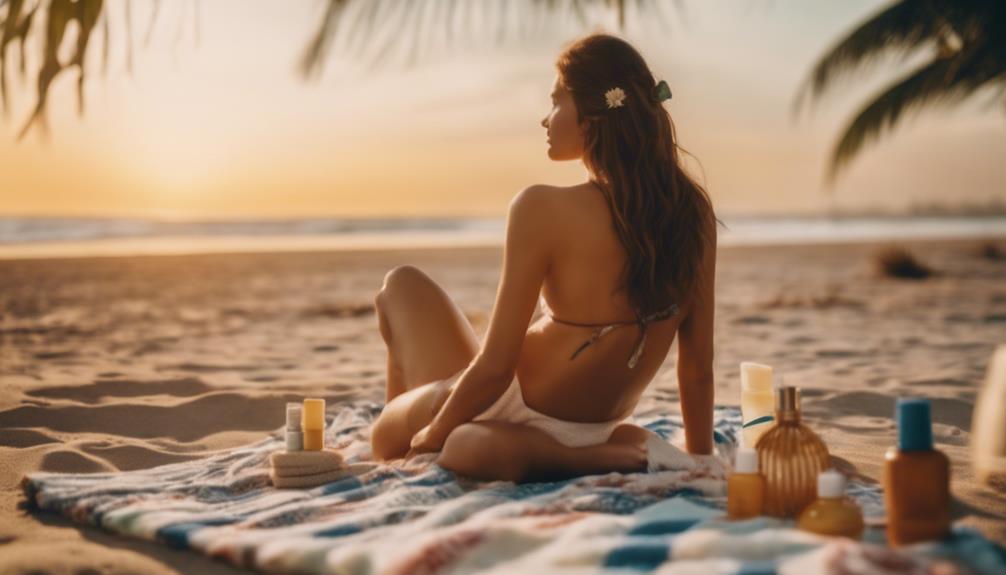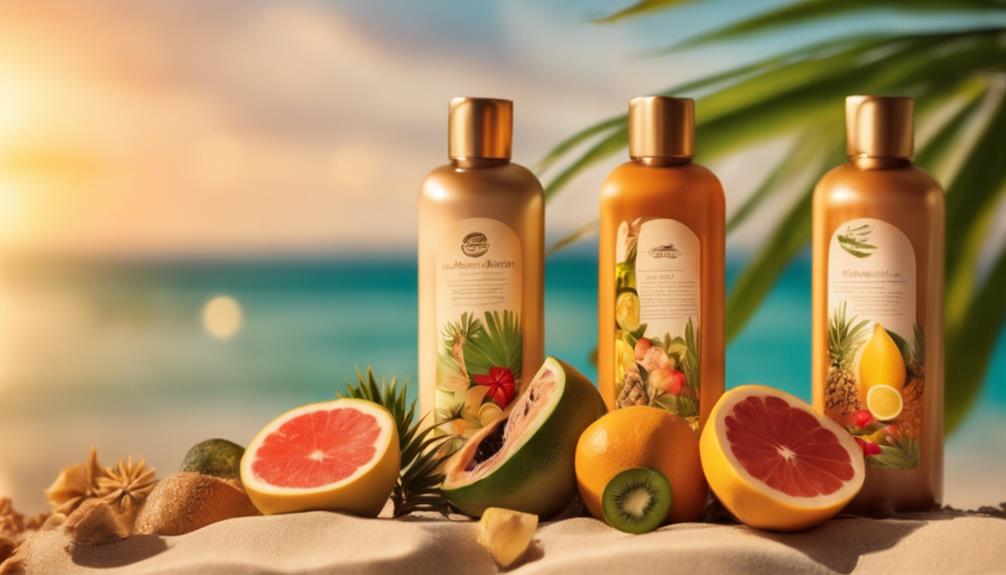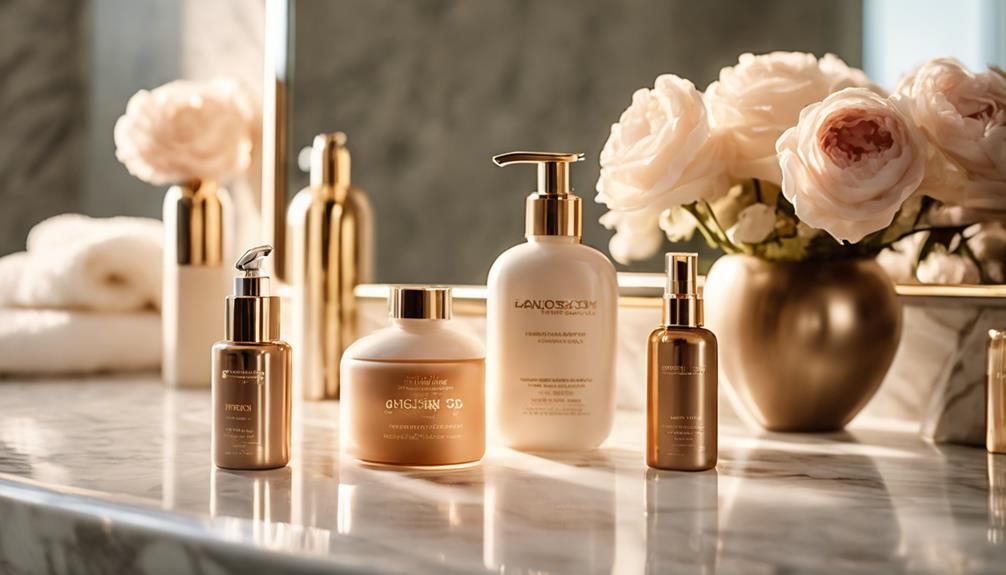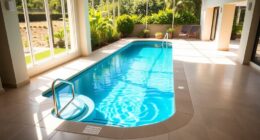Using tanning beds exposes your skin to harmful UV radiation, putting you at serious risk. This significantly raises the likelihood of developing skin cancer, especially if you are under 20. In addition, overexposure can lead to quicker skin aging and the potential for burns. While some believe that having a base tan provides protection, it actually increases long-term damage. To avoid these risks, consider safer alternatives such as self-tanners and bronzing makeup. Always remember to prioritize sun protection by using broad-spectrum sunscreen. If you are interested in learning more about safe tanning practices and skincare, there is valuable information available for you.
Key Takeaways
- Tanning beds significantly increase the risk of skin cancer, especially for users under 20 years old.
- UVA rays from tanning beds accelerate skin aging and can cause severe burns.
- There is no safe tanning; any UV exposure carries inherent risks to skin health.
- Self-tanners and bronzing makeup are safer alternatives that provide a bronzed look without UV damage.
Health Risks of Tanning Beds
Tanning beds pose serious health risks, markedly increasing your chances of developing skin cancer, including the deadly melanoma. If you're under 20, using tanning beds can heighten that risk even more.
Overexposure to UVA rays not only accelerates skin aging but also leads to burns and irritation. To protect yourself, limit your tanning sessions and adhere strictly to time guidelines set by manufacturers.
Always choose salons that maintain high cleanliness standards and are transparent about their protocols. Verify you wear snug-fitting, FDA-approved goggles for best eye protection.
Myths About UV Radiation
Many people mistakenly believe that a base tan can protect their skin from UV damage, but this misconception only exposes you to more harm.
A base tan doesn't offer any real safety; instead, it increases your risk of long-term skin damage and skin cancer.
You might also think that tanning beds are a safer option than natural sunlight, but they emit the same harmful UV radiation that leads to premature aging and melanoma.
It's essential to understand that there's no such thing as safe tanning.
Instead of relying on tanning beds or the false security of a base tan, consider safer alternatives like self-tanners or bronzing makeup to achieve that sun-kissed look without the risks.
Safe Alternatives to Tanning
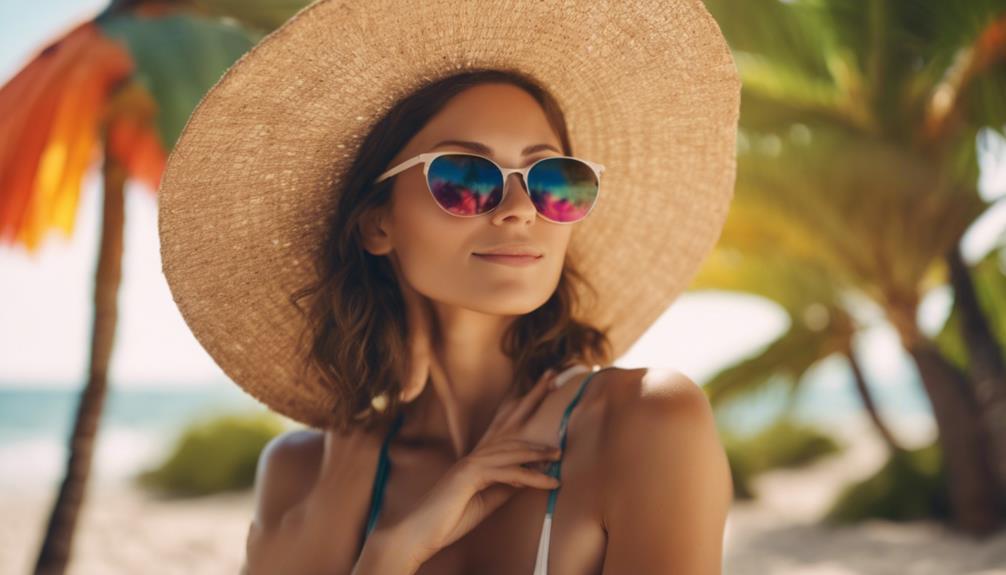
Choosing safe alternatives to tanning can help you achieve a beautiful glow without the risks associated with UV exposure.
Self-tanning lotions are a fantastic option, providing a bronzed look without the dangers of UV rays. If you prefer a professional finish, consider booking a spray tan for even coverage and a natural appearance.
Bronzing makeup is another quick solution, giving you an instant glow for special occasions.
Additionally, embrace your natural skin tone by maintaining a solid skincare routine, which includes moisturizing and applying sunscreen daily.
When outdoors, always wear protective clothing and wide-brimmed hats to shield your skin from harmful rays.
These alternatives not only enhance your appearance but also prioritize your skin's health.
Preparing for Tanning Sessions
Before heading to your tanning session, make sure to exfoliate your skin for an even tan. This removes dead skin cells, helping you achieve a smoother, more uniform color.
Avoid using lotions or oils right before tanning, as these can block UV rays and prevent ideal results. If you shave or wax, do it at least 24 hours in advance to allow your skin to settle.
Consider applying a tanning bed-specific lotion that enhances the tanning process. During your session, monitor how your skin reacts; if you notice redness or tenderness, it might be time to stop.
Always listen to your body and respect its limits to minimize risks and maximize your tanning experience.
Protective Techniques and Products
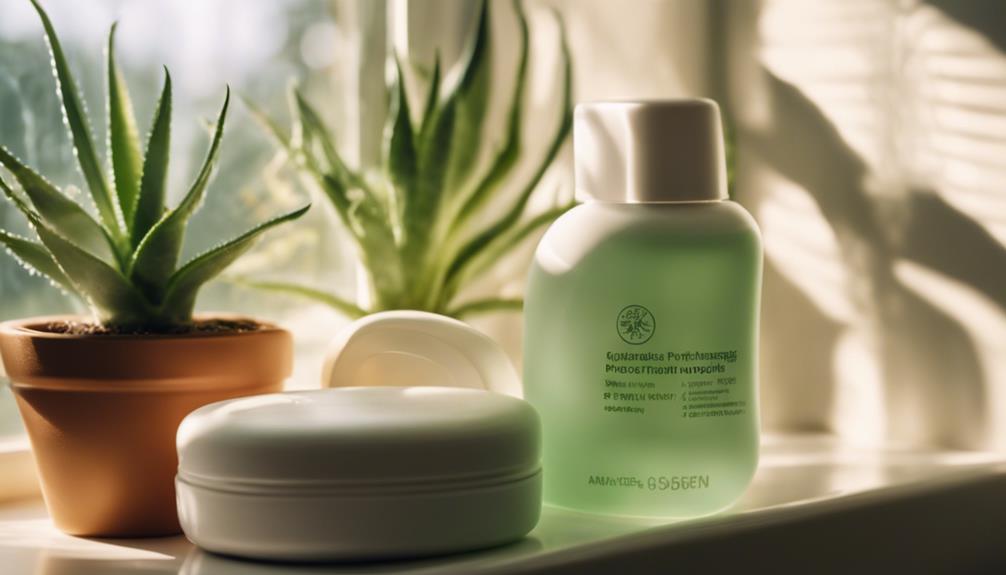
Using proper protective techniques and products is essential to safeguard your skin and eyes during tanning sessions.
First, always apply a broad-spectrum sunscreen with at least SPF 30, even if you're in a tanning bed. This helps minimize UV damage.
Invest in high-quality, FDA-approved goggles that fit snugly to protect your eyes from harmful rays.
Consider using a tanning bed-specific lotion to enhance your tan while keeping your skin hydrated.
Exfoliate before your session for an even application, and avoid products that might block UV penetration.
Monitor your skin's reaction and stop tanning if you notice redness or irritation.
Understanding Skin Damage
Even with protective measures in place, understanding how tanning beds can damage your skin is vital for making informed choices about your tanning sessions.
Tanning beds emit UV radiation that not only accelerates skin aging but also greatly raises your risk of skin cancer.
The following points highlight key aspects of skin damage related to tanning bed use:
- UV exposure increases the likelihood of melanoma, especially for those under 20.
- A base tan offers no real protection; it only compounds skin damage.
- Overexposure leads to burns, irritation, and premature aging.
- Regular use heightens the chance of developing skin conditions.
Choosing Safe Tanning Options

Choosing safe tanning options is essential for protecting your skin while still achieving a desired glow.
Instead of relying on tanning beds, consider self-tanning lotions or professional spray tans, which provide a bronzed look without UV exposure. These alternatives are safer and don't increase your risk of skin cancer or premature aging.
If you prefer a sun-kissed appearance, use bronzing makeup for an instant glow without harmful effects.
Always embrace your natural skin tone and maintain a solid skincare routine.
Remember to apply sunscreen whenever you're outdoors, even on cloudy days, to shield your skin from harmful UV rays.
How Do Tanning Bed Hygiene Practices Impact the Risks Revealed in Tanning Bed Use?
Proper tanning bed hygiene is of utmost tanning bed hygiene importance. Failing to clean the bed properly can increase the risk of bacterial infections, skin irritations, and even serious health issues. Regular cleaning and disinfection can significantly reduce these risks and make tanning bed use safer for individuals.
Conclusion
To sum up, while tanning beds might seem like a shortcut to a flawless glow, the risks to your skin are nothing short of catastrophic.
You don't want to trade your health for a temporary tan!
Instead, embrace safer alternatives and prioritize your skin's well-being.
With the right knowledge and protective techniques, you can achieve that radiant look without the dangers of UV exposure.
Remember, your skin is your largest organ—treat it with the care it deserves!



